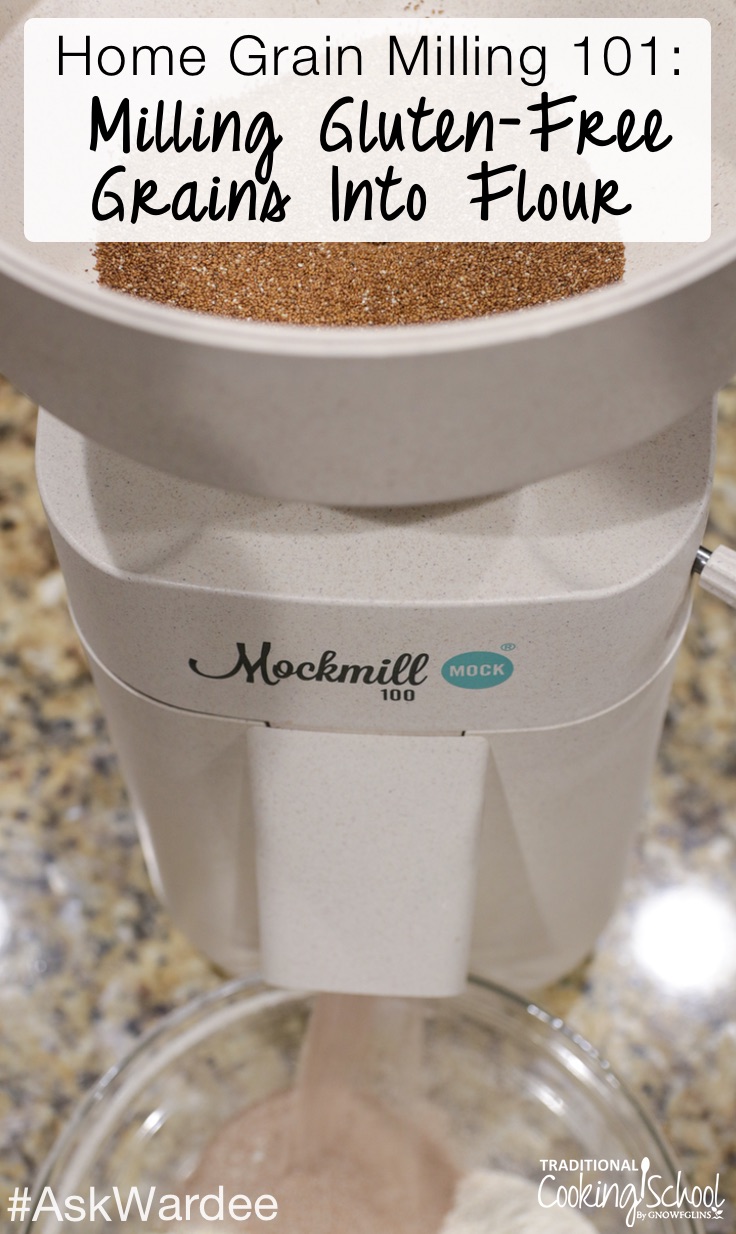
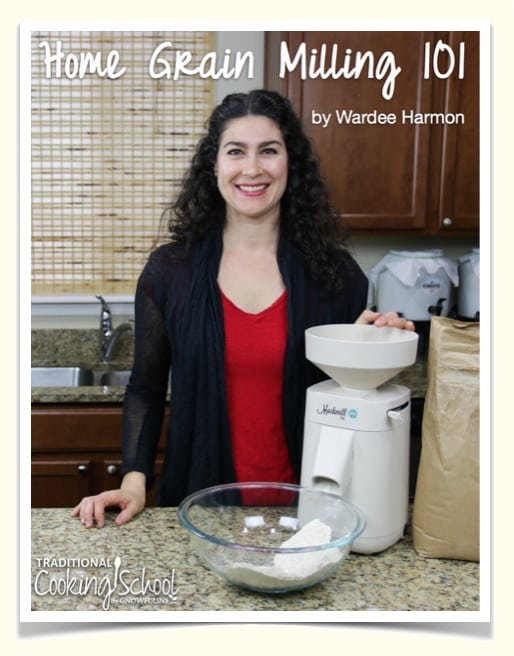 This part 2 of 4. Want all 4 parts of the “Home Grain Milling 101” series combined into a FREE all-in-one eBook you can refer to offline?
This part 2 of 4. Want all 4 parts of the “Home Grain Milling 101” series combined into a FREE all-in-one eBook you can refer to offline?
Click here to download the “Home Grain Milling 101” eBook for FREE!
Significant money savings, your own custom flour blend(s), and better results are in store when you mill your own gluten-free flours.
Not to mention… it’s done in a flash! (Just check out today’s video recording to see!)
Recently, I asked via email and Facebook: “What do you want to know about home grain milling?”
I received nearly 200 replies (and they’re still coming in). I definitely got the message that, for most of you, home grain milling is both exciting and overwhelming… and you have lots of questions about it.
Yet, since I received way too many questions to answer in one episode of #AskWardee, I’m splitting them up into multiple episodes.
First, we covered Home Grain Milling 101: The Basics (why do it, mill types, how to use a mill, etc.) and Ancient Grains 101. Today, we’re tackling how to make your own gluten-free flours and blends. Plus, I’ll answer the question of whether or not you need a dedicated gluten-free grain mill.
Future episodes will handle how to use and store your flour, how to make substitutions, and the other creative (and fun!) uses for a home grain mill. It’s a jam-packed series, and I hope you can make them all!
(Or at least read through them… all the transcripts will be provided, as usual.)
Check out the particulars — including a gluten-free milling demonstration — in today’s #AskWardee in print, podcast, or video below! And be sure to come back every Wednesday throughout this month of November for the rest of the series!
Also… tomorrow (Thurs 11/16) I hope you’ll join me at 3pm Eastern on my Facebook page for a live masterclass all about the history and healthy of home grain milling… with a special guest! Edit: Here’s the replay of that free webclass.
Subscribe to #AskWardee on iTunes, Stitcher, YouTube, or the Podcasts app.
Q: Milling Gluten-Free Grains Into Flour At Home… Is It Possible? Which Ones?
Linda M. asked:
I didn’t know it was possible to mill gluten-free grains at home! Please explain.
Rachel J. asked:
Hi Wardee, I’d love to know all about milling gluten0free grains. I haven’t decided if it’s worth it to buy a grain mill and if so, which kind? I can never get my rice ground finely enough, so I typically stick to buckwheat and oats ground into flour using my BlendTec and sifted (and just purchase my starches). Would love to use the healthiest and most frugal method.
Ellen H. asked:
Are there any gluten-free grains that should not be ground?
It’s absolutely possible to mill your own gluten-free flours at home with great results — and it’s quite exciting to do so for many reasons:
- You can control which grains you grind — and which end up in your baked goods;
- You’ll save money over buying gluten-free mixes or flours;
- The results are healthier and better because the flour is freshly ground;
- and It’s faster and easier than you think!
Types Of Gluten-Free Grains & Home Grain Mills
- Amaranth
- Buckwheat
- Corn
- Millet
- Oats (if certified gluten-free)
- Quinoa
- Brown Rice — all varieties
- Sorghum
- Teff
- Starches like tapioca or arrowroot
- Almonds or other nuts/seeds like flax and chia (they all tend to be oily)
- Coconut
- Beans (yes, legumes make gluten-free flour, too!)
Not all mills will grind all these things, so you should check your manual to find out what will and won’t work. As we discussed in episode 120 of #AskWardee, here are the mill types and what they will grind:
- impact mills such as Nutrimill — only grains
- stone mills such as Mockmill — grains, beans, and non-oily nuts/seeds
- steel or cast iron burr — grains and all nuts/seeds (even oily)
- Vitamix — grains and all nuts/seeds
- coffee grinder — small batches of seeds (even oily)
Cassava is also a popular gluten-free (and grain-free flour) but cannot be ground at home to my knowledge. We recommend Otto’s brand, already ground. I don’t think arrowroot is a possibility for grinding at home, either.
It’s very handy to mix up a gallon or so of gluten-free flour blend and store in the freezer until needed. (Go here to see guidelines for storage of both whole grains and flour.)
Homemade Gluten-Free Flour Blends
Though you can make up your own gluten-free blend with the grains you have on hand, these are the blends that have worked for me.
The first is the whole grain — well suited for dense baked goods like muffins and quick breads.
The second is the all-purpose light which contains starch and makes great cookies, cakes, biscuits, and scones.
Use these blends 1:1 in your gluten-free recipes.
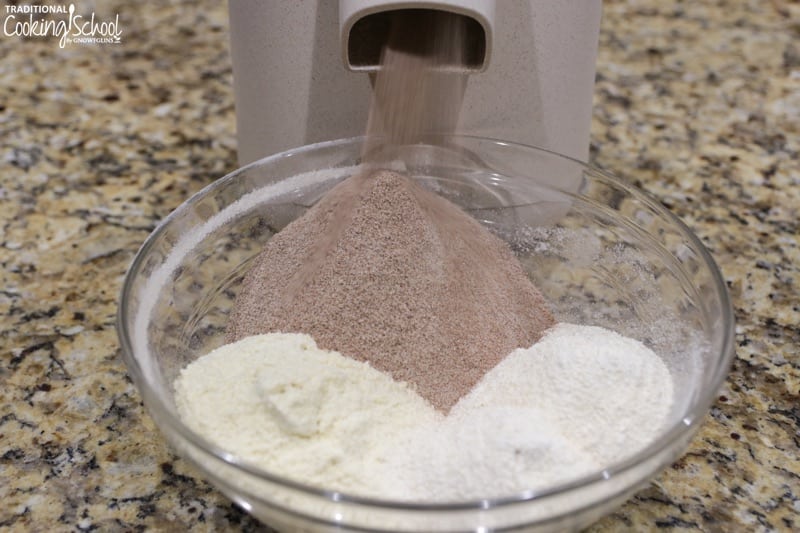
Whole Grain Gluten-Free Blend (Starch-Free)
- Sweet brown rice flour* or brown rice flour
- Sorghum flour
- Buckwheat flour
- Millet flour or amaranth flour
Combine and mix equal amounts of the above flours. Store in the fridge or freezer and use as needed. Feel free to add more flours or change up the ratios. For instance, you could use half sweet brown rice flour (for the gelatinous properties) and then the other half of the blend would be a mix of the other flours.
All-Purpose Light Gluten-Free Blend
- Sweet brown rice flour* or brown rice flour
- Sorghum flour
- Buckwheat flour
- Tapioca flour or arrowroot powder
Combine and mix equal amounts of the above flours. If you desire a “lighter” flour, increase the amount of tapioca or arrowroot to up to half of the mixture. Store in the fridge or freezer and use as needed.
*Both of these gluten-free blends call for sweet brown rice flour, which is naturally gelatinous. If you use this, rather than regular brown rice flour, you may be able to reduce or eliminate the need for additional gelatin or binding ingredients in your recipe.
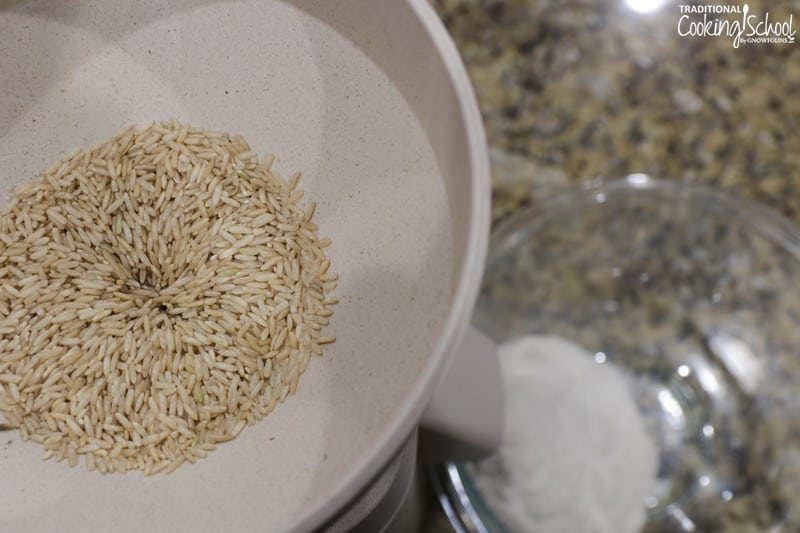
Q: Do You Need A Dedicated Gluten-Free Grain Mill?
Amy M. asked:
I would love to know what to do about cleaning my grinder between grinding gluten and non-gluten grains. Is there a way to use one grinder for both?
Melissa S. asked:
I have a Nutrimill. I used it for years, but I haven’t touched it in quite a while because I’m gluten-free now. Is it possible to clean all the flour/gluten out and use it to grind non-gluten grains without risk of contamination?
This is a great question. The answer is… it depends on the severity of the reaction to gluten.
Allergy Or Intolerance/Sensitivity?
Does the family member with the gluten issue have celiac disease (allergy) or an intolerance/sensitivity?
In the case of allergy, it is best that absolutely no gluten get into the gluten-free flour. On the other hand, if a person is intolerant or sensitive to gluten, perhaps a tiny amount would be allowable. (That is totally up to the person’s individual response to a tiny bit of gluten.)
So, for someone with celiac, it is best to have a dedicated mill that never touches gluten grains. The family could choose to ALL follow a gluten-free diet and therefore only have one mill that never touches gluten. Or, the family could eat both gluten and gluten-free, and have two mills — one for gluten and the other for gluten-free. Either scenario would work.
In a family where intolerances/sensitivities are present (not allergy), and depending on the severity, it’s possible that one mill can do both.
The Mockmill, our mill, cleans up pretty well. It can be opened and wiped out, even to clean the stones. Then, run white rice through it as a final cleaning step.
In our family, our son has gluten intolerance and the rest of us don’t. Yet, I can use just one mill for all our grains, whether gluten or gluten-free — just by cleaning it out between uses. Even when we only used the Vitamix for flour, we did fine cleaning out the dry container between flour types.
The Vitamix dry container is super easy to clean out, if that’s your mill. To my knowledge, cleaning a Nutrimill to remove all gluten is not possible.
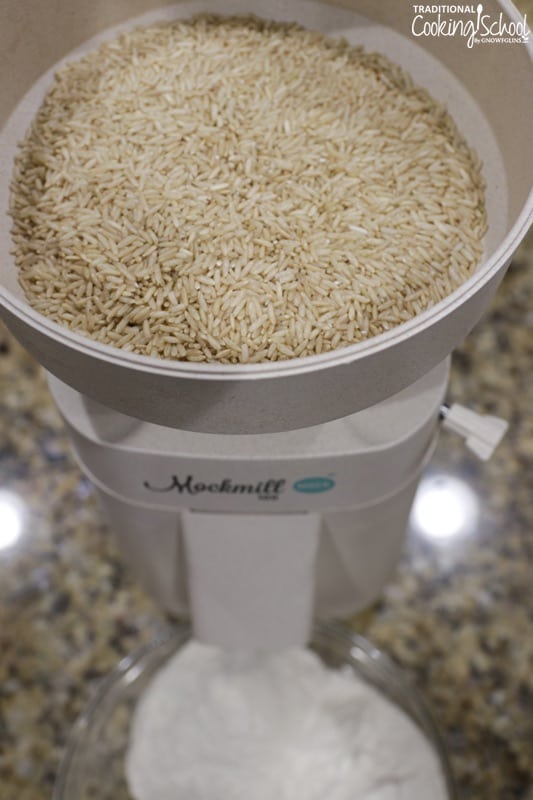
Q: Can You Mill Nut/Seed Flours?
Amy H. asked:
Would love to know more about milling nut flours! I haven’t attempted making my own yet and would love your advice! I use nut flours as opposed to tapioca, rice, potato, and most other gluten free flours, as I seem to react to them almost worse than gluten containing flours.
Yes, you can!
If they’re oily (like almonds, flax, chia, coconut), use a steel or cast iron burr mill or a Vitamix. Be careful with a high-speed blender, like the Vitamix, however; you can end up grinding past meal/flour into paste and then into butter.
A coffee grinder works great for small amounts of flax or chia seeds.
I did test the Mockmill with very dry sprouted almonds and unsweetened (defatted) shredded coconut. Unfortunately, it made a paste on the stones instead of meal/flour with both almond and coconut. Although it was easy to clean, I’d rather use my Vitamix in the future for both almond meal/flour and coconut flour.
Q: How Does The Mockmill Work For Gluten-Free Flours?
Start with clean grains. Inspect the grains and remove rocks or debris manually. Rocks, especially, can damage your mill.
Then, add the grain to the mill and turn it on. Along the way, adjust the fineness/coarseness. Finally, dump out the flour, unless it comes out a shoot as the Mockmill does. Be sure to put a bowl there!
Keep it running as you keep adding different kinds of grains, collecting them in the bowl for your own special blend! Gluten-free flours work much better in recipes when blended, so this is a good thing!
To lighten up your gluten-free flour blend, add some tapioca or arrowroot starch to the mix. (See blend mixes above for more info.)
Watch either video embedded in this post to see how the Mockmill works for gluten-free flours. 🙂
More About The Mockmill…
As you can tell from this series, the Mockmill is my favorite grain mill and the one I recommend!
The Mockmill is a home stone grain mill, and it’s engineered and manufactured in Germany by Wolfgang Mock. He started making home grain mills back in the 1970s, so he’s been doing it for over 40 years. It’s estimated that nearly 70% of the stone mills out there are made by him.
This mill is super exciting because it contains the best features of Wolfgang Mock’s milling career, yet it’s much more affordable. The reason it’s more affordable is because this mill comes in a durable recycled material housing (instead of expensive wood).
I love the flour it produces because it’s super healthy and nutritious (being fresh ground), and it has a really fine texture. So, it makes wonderful, light bread, and it’s cool to the touch instead of being warmed up as some mills will do.
Furthermore, this mill will grind all grains, even gluten-free. It can even crack grains for porridge, and it has many other uses (like spices, nuts, and seeds).
You can see how it works in this video:
All the details including the very affordable price and FREE SHIPPING are on this page. By the way, it also comes as a KitchenAid attachment — very exciting for those who don’t want another appliance to take up any more room!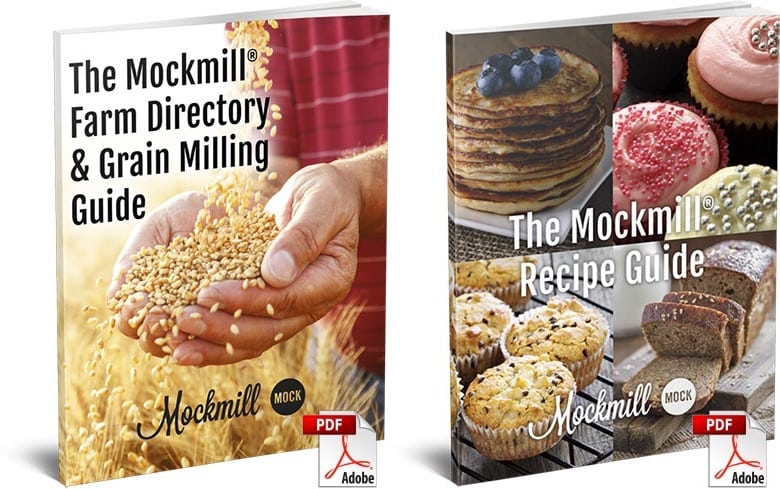 Also with your purchase of the Mockmill, you’ll get two fantastic eBooks from the Mockmill team: The Mockmill Farm Directory & Grain Milling Guide and The Mockmill Recipe Guide. Both of these eBooks are fabulous!
Also with your purchase of the Mockmill, you’ll get two fantastic eBooks from the Mockmill team: The Mockmill Farm Directory & Grain Milling Guide and The Mockmill Recipe Guide. Both of these eBooks are fabulous!
And, for a limited time… if you decide to purchase the Mockmill, I’m throwing in complimentary copies of both my Sourdough A to Z and Einkorn Baking eBook and Video Packages. They’re each worth $64 for a total of $128 in additional bonuses from me.
To claim your extra free bonuses from me after purchasing the Mockmill, just go to tradcookschool.com/millbonus. Have your order # handy, because you’ll need it to claim the two free eBook packages!
Q: Where To Buy Gluten-Free Grains For Milling
Mary P. asked:
Were you able to find celiac safe rice and other grains for milling? Even our local rice farms tell us that because of drift, they can’t guarantee that their rice is Celiac safe. When we cook rice, we rinse it very well, since gluten washes off. When we’ve tried that on milling — rinsing, then drying, it seems to clog the grinder.
We do have a dedicated grinder; we had to take it completely apart and thoroughly clean every part of the mechanism before shifting focus. The other reason we only mill gluten-free flour is because of the dust a traditional mill can generate. We realize that not everyone has to go to these measures, but we would be thankful to learn anything we can to re-introduce bulk milling into our future. Gluten free grains are so pricey; every savings helps.
Mary, I’m not familiar with guaranteed celiac safe rice. I think it probably varies from farm to farm and contacting each one (like you’re doing) is your best option. Everyone — if you know of celiac-safe gluten-free grain sources, could you leave info in the comments? Thank you!
In general, here are my favorite places to buy whole grains, whether gluten-free or containing gluten:
- Amazon — use this link; it’s a search for “gluten-free bulk grains”
- Azure Standard — this is a natural food warehouse that may or may not deliver in your area.
- Local farms — refer to The Mockmill Farm Directory & Grain Milling Guide (it comes with the Mockmill) or search locally… you never know what you might turn up!
The handbook that comes with the Mockmill — The Mockmill Farm Directory & Grain Milling Guide — contains easy links to the websites and Amazon.com listings of small family farmers who will gratefully ship their grains direct to your door!
This easy-to-follow guide will introduce you to the abundance of clean grains you can buy straight from small family farms across America.
You can find and buy every traditional variety of wheat, plus, rarer, “ancient” identity-preserved grains, and even a wide selection of naturally gluten-free grains and legumes. All of which you can mix ‘n’ match in your baking, discovering new family favorites along the way.
Get this guide free with your purchase of the Mockmill.
 This part 2 of 4. Want all 4 parts of the “Home Grain Milling 101” series combined into a FREE all-in-one eBook you can refer to offline?
This part 2 of 4. Want all 4 parts of the “Home Grain Milling 101” series combined into a FREE all-in-one eBook you can refer to offline?
Click here to download the “Home Grain Milling 101” eBook for FREE!
Helpful Links
- The Mockmill — my favorite and recommended (affordable) home stone grain mill — Hurry! The limited time offer to get my eBook packages valued at $128 won’t last long!
- Claim your FREE ($128 value) bonuses with your purchase of the Mockmill here!
- Nutrimill
- Vitamix
- Free “Home Grain Milling 101” eBook — it’s all 4 parts of this series combined into a single, FREE download from me!
- Home Grain Milling 101, Part 1: The Basics
- Home Grain Milling 101, Part 3: Baking With Fresh-Ground Flour
- Home Grain Milling 101, Part 4: More Fun Things Your Grain Mill Can Do!
- FREE Dairy-Free Milks & Substitutions Guide
- FREE Webclass: Baking With Fresh-Ground Flour
By the way, I want to give credit to Vickilynn Haycraft, my dear friend and “milling mentor”, who introduced me to grain milling years ago and who contributed to some of these answers. I also want to thank Wolfgang Mock, whose stone grain mill — the Mockmill — I am using for demonstrating various milling tasks in this series. And finally, I want to thank Jade Koyle from Einkorn.com for his wonderful einkorn grain and help with using the Mockmill!
More Mockmill Related Articles from the #AskWardee Show:
- Unboxing The Mockmill (Affordable Home Stone Grain Mill)
- Differences Between Nutrimill And Mockmill #AskWardee 120
- How To Simply & Easily Clean Your Mockmill Grain Mill #AskWardee 119
- Where To Buy Whole Wheat Berries, Grains, and Flour #AskWardee 148
- How to Store Flour and Grains#AskWardee 149
- How Much Flour To Grind For Your Recipes #AskWardee 118
- Buckwheat Flour 101: Choosing, Milling Flour, Sprouting, Recipes & More! #AskWardee 141
- Milling Soft Wheat In A Grain Mill {Homemade Pastry Flour} #AskWardee 131
- Is The New Ultragrain White Whole Wheat Healthy? #AskWardee 112
If you mill your own gluten-free grains (or want to!), why do you do it? What’s your favorite grain mill? Any tips to add to this episode?
...without giving up the foods you love or spending all day in the kitchen!

2 free books:
Eat God's Way
Ditch the Standard American Diet, get healthier & happier, and save money on groceries...
We only recommend products and services we wholeheartedly endorse. This post may contain special links through which we earn a small commission if you make a purchase (though your price is the same).

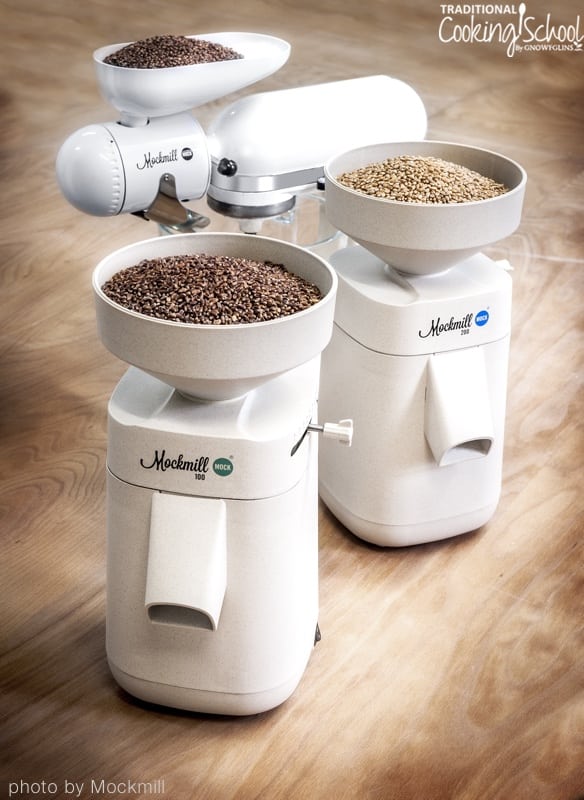
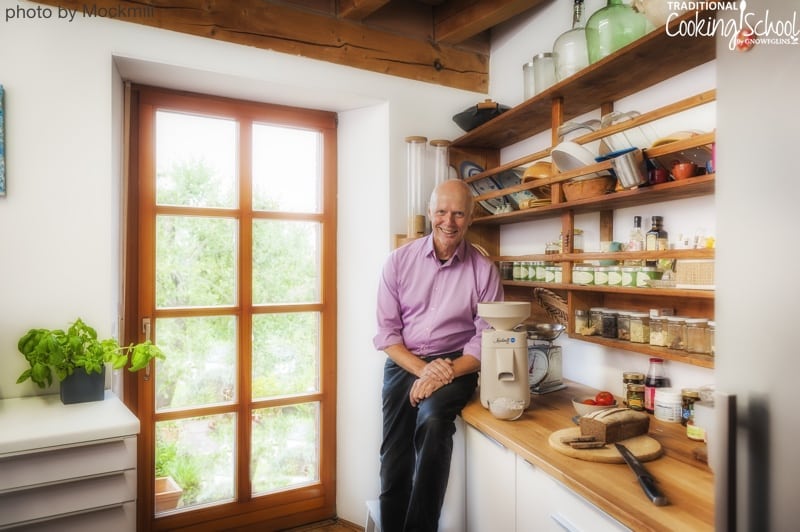

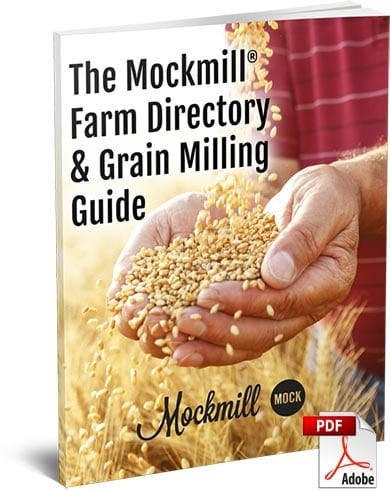

Hi, love the series. Two questions.. 1. For the gluten free flour blend, does it have to be brown rice for the sweet brown rice flour? and 2. Why brown rice? (for the extra fibre content?)
I have some sweet white rice on hand (super cheap at my local Asian grocery store), and wondering if I can use the sweet white rice flour instead of sweet brown rice. (The price is so cheap that it’s not that much more than milling myself, and doesn’t wear down my precious Vitamix blender blades… 🙂 )
Hi Tanya,
You can use any flours, these are just suggestions. The more grains included, the better the results. Sweet brown rice flour is naturally gelatinous, which helps with gluten-free for binding since there is no gluten. 🙂
~ Millie, TCS Customer Success Team
I appreciate your work in this area. I have celiac and have been gluten-free for 31 years. My adult children (including an adopted child) and my grandchildren are all gluten-free for various reasons.
Several years ago Dr. Tom O-Bryan, a specialist in gluten-free did a Gluten Summit. He interviewed experts from around the world. Dr. O’Bryan is also gluten-free because of non-celiac gluten sensitivity.
I learned that our body can produce antibodies to different tissues in the body (even with non-celiac gluten sensitivity). A person may not have symptoms but depending on a person’s genetic vulnerability damage may be occurring over a number of years and symptoms may happen in future.
Because of this, I believe that even with non-celiac sensitivity it is important to have a dedicated gluten-free mill.
Dr. O’Bryan did antibody testing on himself through Cyrex labs and found that he had antibodies to three different brain tissues. (He wasn’t feeling symptoms.) He made changes to make sure everything was very clean and those antibody levels reduced back to normal.
Dr. O’Bryan Gluten Summit is still available for purchase at http://www.thedr.com
Wardee, thanks for all your work. I believe people need to know the risks of gluten contamination.
Judy
Do you need to soak the nuts/grains first before milling because of the phytic acid on them?
Hi DeAnna,
Yes, soaking grains is essential for proper digestions. By soaking, you are breaking down the phytic acid so it can be absorbed correctly for proper digestion.
Nuts contain enzyme inhibitors. which are locked up in the until they are needed. Soaking mimics germination unlocking the enzymes.
~Danielle, TCS Customer Success Team
Thank you for answering my question and for this series! I have learned so much about milling and so many others things from you. Thank you, Wardee, for sharing your knowledge with us!
I’m interested in milling my own flour. This machine sounds great. Will it al do Chokecherry seeds?
Hi Cecilia,
We have verified with MockMill and they don’t think Chokecherry seeds will work in the MockMill although they have not tried them in the machine.
MockMill believes that they would be too sticky even when dried.
~ Vicki, TCS Customer Success Team
Hi Wardee,
Do you have any recipes for home milled gluten free grains???
K
Hi, Ka! I’m happy to help! Here is a link to the recipe archives on the blog, where there are many gluten-free recipe sections — including Beans, Grains & Vegetables, and Desserts & Cookies: https://traditionalcookingschool.com/recipes/
I hope that helps!
Sonya
TCS Customer Success Team
Are beans supposed to be cooked before milling? I have heard some beans are toxic if eaten raw.
Hi, Victoria,
Great question! The assumption is they will be milled and then baked when the flour is used in a dough. So they aren’t eaten raw even if milled when raw.
One can also soak, then sprout, then dry beans then milled into flour.
~Peggy TCS Customer Success Team
Just wanted to request the gluten-free version please.
i was hoping to not use brown rice if possible? Something healthier. I made a sour starter just now with 1/4 cup buckwheat and 1/4 cup water
Hi Roxanne,
Yes you can use just buckwheat flour in your gluten free sourdough starter. Although we do recommend brown rice flour.
~ Vicki, TCS Customer Success Team
After my sour starter is done which today is the 2nd day from the day I made it I use buckwheat. Can my Sour starter be used in any sourdough recipe when when it comes time to baking something?
Hi, Roxanne.
For more in-depth help I recommend you try our 30-day free trial so we can answer your questions more thoroughly then we can via comments. Here’s a link to sign up: http://tradcookschool.com/pula
Do you have any recipes that use these gluten free flour blends? I am trying to do gluten free for DD, and would like a “regular” bread recipe and/or a roll recipe from these blends.
Hi, Beth Ann: If you search “gluten-free flour blend” here on the blog, you will see some posts that mention different blends that Wardee and the other writers have used in recipes. Most, however, are for muffins, cookies, brownies, etc. — not many for regular bread. —Sonya, TCS Customer Success Team
How well does Blendtec work for milling flours? Any tips on how to use Blentec for milling flours for maximum results?
Thank you
Hi, Barb.
We have not personally used a Blendtec however there are a few comments in this post of with feedback on using it for milling: https://traditionalcookingschool.com/q-a/q-a-grain-mill-options/
~Danielle, TCS Customer Success Team